漫画アニメ共に企画初期の段階から声をかけて動いており、漫画はボンボンから当時新人の藤異先生、アニメ側からメガテン好きな岩永さんが名乗りを上げ参戦。しかし途中で私がいたG社が潰れたことで、TVアニメは私の与り知らぬ所へ……
Source: Yogiri
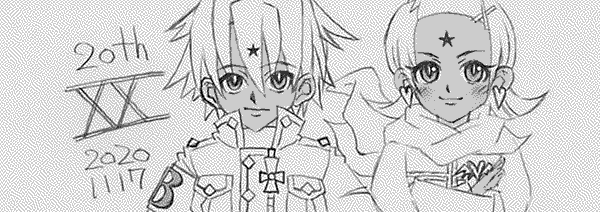 Source: Yogiri
Source: Yogiri
Last updated: 2025-12-18
Original source: https://posfie.com/@_kerorin/p/bCrjK7n as assembled by Kerorin
On the day of the twentieth anniversary of the first Shin Megami Tensei Devil Children games (Red Book and Black Book), pseudonymous game planner Kazaru Yogiri took the opportunity to reflect on the project and the setting he worked with Atlus and Multimedia Intelligence Transfer to bring to life.
As part of the celebration, he took questions from fans on social media, giving his own unofficial thoughts on what he had in mind for the characters and the world they lived in.
This summary translation is interspersed with sketches of the Devil Children characters provided for a twentieth anniversary signing by mangaka Hideaki Fujii. Sources are provided as links to the Wayback Machine for posterity.
 Source: YUU
Source: YUU
It has been noted that there was an unusually high concentration of requests for Elegy at this event.
Yogiri remarks that it's been twenty years, and Devil Children's setting differs across media. He hopes that his answers help people cherish the series they enjoy, and that he doesn't want his answers to, essentially, quash anyone's personal headcanons. He approves of in-depth reading and analysis of the story.
Devil Children was always envisioned as a "media mix" project, much like Pokémon itself, with the games, manga, anime and trading card game.
Yogiri was not directly involved in the PlayStation version of Red and Black Book or in planning any of the content it added. His involvement in the series primarily involves the Game Boy Color versions of Black Book and Red Book, a promotional anime made for Tokyo Game Show later reused in part for the PlayStation version, and the setting of the manga.
Production of the anime initially fell apart in early pre-production with the first studio chosen. As the timing of the anime didn't line up with Yogiri's contributions to the project, TMS went ahead with their own interpretation of the setting without Yogiri's direct involvement.
The Devil Children anime "DeviChil" was advertised at the Tokyo International Anime Fair, with flyers including art of the characters and demons with English-translated names.
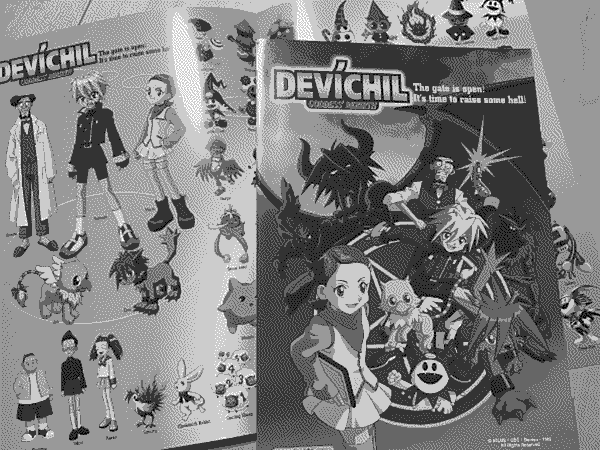 Source: Yogiri
Source: Yogiri
The abbreviation "DeviChil" might have originated from changes made for a hopeful overseas release of the anime, to skirt around having the word "Devil" right in the title. For the same reason, the official English localization for the Devil Riser summoning guns was going to be to call them "GUMPs".
It's worth noting that the association between Devil Risers and GUMPs was more than a mere name change. In the anime, the revolver-like Devil Risers were visually modified to resemble the handheld computer GUMPs from the Devil Summoner games. Though they were still called "Devil Risers" in Japanese, the one Setsuna wields in the anime looks strikingly like the GUMP in Soul Hackers, recoloured with minor adjustments to its handle.
As the name implies, this would have been a prequel to Devil Children, specifically to the Red and Black Books. It would feature two characters by the names of Ringo (林檎) and Tsubomi (蕾), whose gravestones appeared in Red and Black Book's Sand Land region. There they were heavily implied to be the respective mothers of Mirai and Setsuna.
Interestingly, the first chapter of the manga outright names Tsubomi Kai as Setsuna's mother in the one flashback scene she was in. Tsubomi was only identified by her face in Black Book, no name was given.
Devil Children Zero would have featured Ringo and Tsubomi fighting alongside the twin brothers Lucifer and Michael. It would have begun with the "mysterious twins," Michael and Lucifer ("Lucimica"), being attacked by devils at the Goho Shrine in Harajuku.
The only official source that had established Michael and Lucifer as twin brothers prior to this was trivia from within the Famitsu Devil Children Black and Red Book Official Guidebook.
Just like Devil Children Red and Black Book, it would have featured a great conflict that could only be overcome with the powers of humans, angels and demons together. That would have most likely meant Ringo, Tsubomi, Michael, and Lucifer.
In Zero, Michael and Lucifer would have lost their powers and memories, becoming children. Like Takajou, a.k.a. Zebul, Michael and Lucifer would have used human pseudonyms while in Harajuku.
Michael would have a beautiful visage, quite different from Michael's robot form in Red and Black Book. He chooses a pseudonym with the surname of "Abe", a reference to the Seimei Shrine.
Though Michael and Lucifer are twins, Lucifer would not share Michael's surname. Without his memories, he instead chooses a different pseudonym.
Takajou may have appeared, but he would not be able to fight; he would essentially be a thought form with none of his usual capabilities. He'd likely be a sort of odd neighbour who moved to Harajuku, and he would potentially have appeared alongside his two brothers.
The plot would progress with Ringo and Tsubomi recruiting Oni and Youma type demons as allies, fighting their way through the Tenbu. Ultimately they would reach their goal, but in so doing nearly their entire team would die. In the end, Ringo and Tsubomi would face the spirits of Adam and Lilith in the underground labyrinth beneath Sand Land, while Youki, their ally, would remain behind on Harajuku.
Zebul's true body is deep underground, and Takajou is an avatar of the true Zebul (Yogiri describes it as a "thought form", which some people call tulpas). That's why he can talk and eat junk food, but not really fight. This is different in the manga, of course.
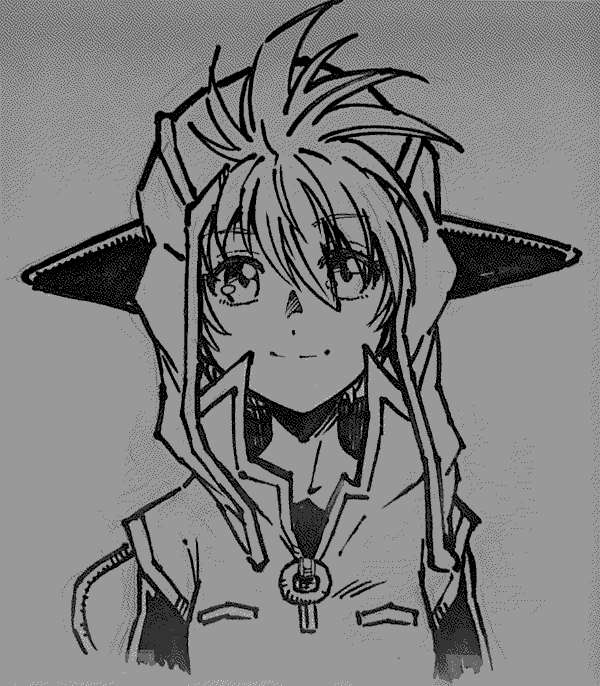 Source: Yama
Source: Yama
Relatedly, there are two other demons sealed deep underground with Zebul, Belphegor (Phegor) and Berith. Together, these three demons are the "Baal brothers," and originally they were one very powerful god before they suffered a terrible defeat.
Belphegor and Berith had their own human avatars like Zebul with designs drafted by Waka Maeda, neither of which appeared in Devil Children media. Yogiri adds that the Baal brothers were Maeda's favorite designs.
The phrase "Holy Children" is used in the spell to summon Takajou's true form, Zebul. Yogiri is unsure why it was used there, but the term does have a specific meaning. It refers to the first children created by Adam and Hoshigami.
Devil Children features Harajuku as a setting because that is Yogiri's hometown. Similar to the significance of Kichijōji to the creators of Megaten and in Shin Megami Tensei itself.
Harajuku National Elementary School, where the Devil Children attend, is a school set up by the government to monitor certain special persons. There's only one class per grade, and more than a few demons in the form of human children attend. In other words, Takajou wasn't the only one.
While living in Harajuku, Nagahisa frequently ends up in the hospital for periods of time. Setsuna is in the Kendo Club, but he isn't very strong. Nagahisa's sole caretaker is his aunt. Though she is very busy, if Nagahisa calls her, she'll come help him in a hurry. Yogiri can't remember any further details of Nagahisa'a aunt. This fits well with the manga, in which Setsuna's aunt needs to work overtime, making Setsuna a latchkey kid.
The Devil Children planner, Kazaru Yogiri, envisioned two additional Devil Children books (i.e. games). They would have been titled White Book and Love Book. While there does exist a Devil Children White Book on the Game Boy Color, it is a sequel of sorts to Red and Black Book that is quite different from the White Book proposed by Yogiri.
White Book would have been told from Nagahisa's perspective with a focus on the angels, while Love Book would have been told from Elegy's perspective with a focus on the fallen angels. There would have been more romantic elements, with a love triangle, and the endings would differ from Red and Black. For example, the second loop of Armageddon would have been very different.
There could be a connection between this second loop and the alternate Elegy that appears near the end of the manga. Fan artist unknown96305 shared two sketches from the previous year, one with alternate Elegy and Mirai walking away from a scene resembling the aftermath of Mirai's first encounter with Souta in Red Book, another featuring a doting Asmodeus making lunch. There's been a small amount of fan art for this peculiar take on Elegy in the past, notably Jimewo's 2011 rendition behind Fujii's first design ( source: Pixiv ).
In White Book, Nagahisa would join forces with at least some of the five archangels. Some of the angels perished, while others had taken refuge on Earth in human form.
In at least one of these games, Zett Takajou would likely have been replaced by a new Devil Child named Ouji Seto, who would fill the same mysterious role as Takajou.
Ouji Seto would be a hot-blooded, self-effusive character who summons his partner, Myouou, with his special golden Riser, the King Riser. He believes devils good and bad will both bring disaster to Earth, and exterminates those devils that take human form, sacrificing the lives of many angels in the process. He and Nagahisa, on the side of the angels, would be endlessly hostile to each other. Despite his ideals, Ouji would fall in love with Elegy, and pursues her.
Ouji's concept never advanced far enough to have a design made by Waka Maeda. However, like the Baal brothers, the human forms of the archangels did have character designs that didn't appear in the games.
Elegy is a selfish and spoiled demon princess. She has significant magical power and can summon demons without a Riser or other device.
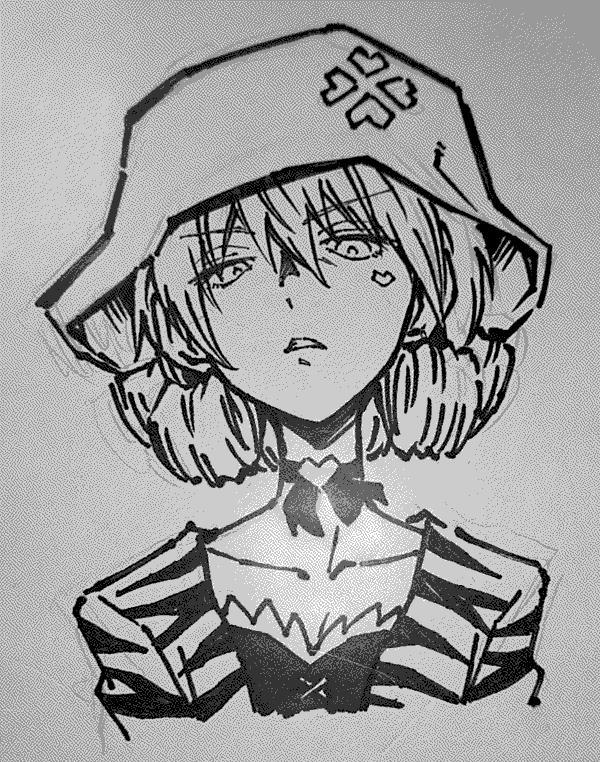 Source: kakari
Source: kakari
Similarly to the manga, she is accompanied by her bodyguards Demogorgon and Asmodeus. Unlike in the manga, Demogorgon is largely silent, and he previously served Lilith. Yogiri describes Asmodeus as a tall and foppish man who represents the sin of lust.
There are good and bad devils, and these two are bad sorts.
Azel is a fallen angel, while Lilith was queen-consort to the demon king. In the past, Azel slept around quite a bit, and used his key to seal Lucifer away after wounding him. (Keys can be used many more ways than just those shown in Devil Children.)
Lilith wanted a more equal relationship, and so parted with Adam, her first husband. She fell in love with Lucifer, and became party to his fall from grace and a war that turned Tenkai into Makai. At the side of the Demon King Lucifer, she aimed to be a ruler-queen, not merely a consort. The marriage was not a happy one; she quarrelled with her husband often, packed her bags and left him every year.
She liked strong, handsome men. Impulsively, she followed her heart and her desires. However, she could be very self-conscious at times.
Azel was one of Lilith's old friends, while Demogorgon was Lilith's subject and loyal to her alone. Once, when she left home for a few years, she returned to find Lucifer, her husband, missing. She accepts Azel's coup and allows him to replace Lucifer as Demon King without any difficulty.
In this arrangement, Elegy is born as daughter to Lilith and Azel. Elegy does not know what caused her mother's death.
The four devil/angel children all lost their mothers at a young age. None of them were old enough to remember their mother's face at the time.
One of Mirai's relatives is her grandpa, Hiromi — also Ringo's father — who is a Shinto priest. He has had six wives in the past, and while he is largely a good person, he is very sloppy. There was never an official design for this character in the game planning. The mad doctor design from the anime was created independently of the planner and Maeda's concepts.
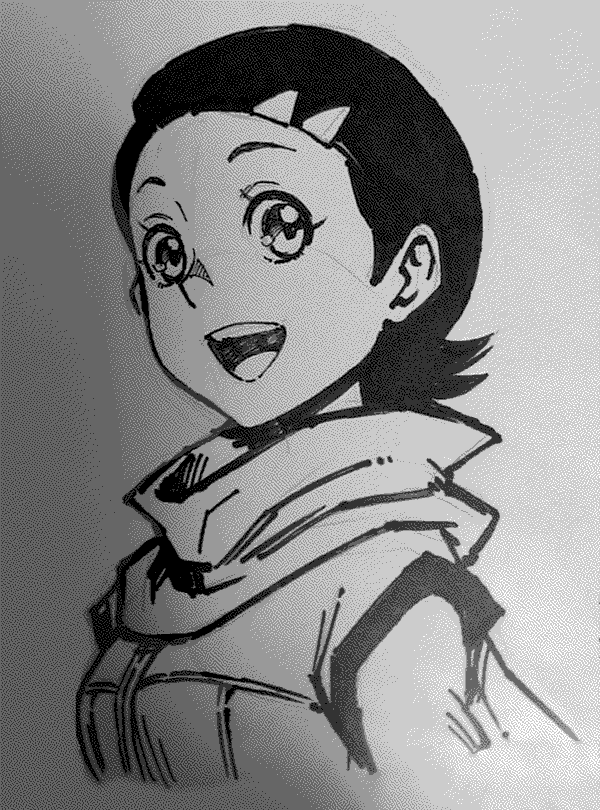 Source: Miburoshi
Source: Miburoshi
In the world of Red and Black Book, Makai was once known as Tenkai. The name Tenkai could be translated to "the Heavenly Realm" or simply "Heaven," similar to Amnesia in Majin Tensei II.
When Fire Land was part of Tenkai, the devils led ascetic lives there in peace and sang praises to God. After Tenkai became Makai, it became desolate and mountainous.
It also appears that no new devils are being born; in other words, the population is stagnant.
Some of this backstory was previously shared in the official web site for the game, with brief histories of Fire Land and Forest Land and original Maeda art. Yogiri clarifies that the whole of Makai used to be Tenkai, not just Fire Land.
Devils typically used circle gates to reach the surface world of the Earth, but there were quite a few other methods, some of them difficult. Messiah Horns and Messiah Eyes aren't the only means of traveling with a circle gate.
Nagahisa's soul is too pure and clean to live on the impure Earth, which is why he is sickly. He's actually dying slowly. Makai is even harsher, but Setsuna and Mirai have sturdier (and presumably less pure) souls that can cope with it.
 Source: Botchi
Source: Botchi
Hoshigami is known and regarded as an absolute being. Even when she sleeps, her influence over Tenkai and by extension Makai is felt. They are not democratic at all.
Various social contracts and obligations decide what an individual does in both societies. They likely follow the "divine right" theory of kingship, meaning that rulers are determined by lineage.
Both societies also value military prowess, meaning that the stronger you are in battle, the better off you are.
In the past, Lucifer and Zebul worked together to awaken Hoshigami. Unfortunately, they acted beyond their limits — presumably defying ironclad laws of reality — and fell from grace as a result.
Hoshigami represents life itself and the Earth. Every man and every woman is a star (Yogiri cites Aleister Crowley here). In that sense, Hoshigami is the god of those countless stars. She symbolizes the final destination of all life, and her awakening is the dawn of a new era. All of this matches up quite nicely with the manga.
Hoshigami was originally represented with a six-pointed star, but Atlus made the Devil Children team change it to a five-pointed star for religious reasons. Yogiri was surprised, given that Atlus's other games have the player fight YHVH as a boss.
Conversely, after this change, Devils were represented with a reverse five-pointed star, i.e. a pentagram. The fact that a pentagram appeared on the foreheads of Mirai and Setsuna was an indication of Hoshigami's blessing, rather than just demonic power, and a reference to the mark of Cain.
It follows that the protection of Hoshigami's blessing is what prevents the Devil Children from dying in the game, especially in the manga adaptation. In the manga, Elegy reveals that she can't die no matter what she's tried, as Setsuna, Mirai and Takajou repeatedly survive fatal blows from the very first chapter.
Hoshigami created the universe in seven days. The number seven is meant to be significant in Devil Children. Yogiri wanted to include it even more. The impetus behind this was the seven trumpets of Revelation, the seven moons of Nostradamus, and the seven days of the week, among other reasons.
Sand Land is the land of the dead, a faded mimicry of heaven where ghosts find themselves.
Those who wish to be reborn sleep, and one day are. For these spirits, the gravestones are like beds, protecting them from the sand and the wind.
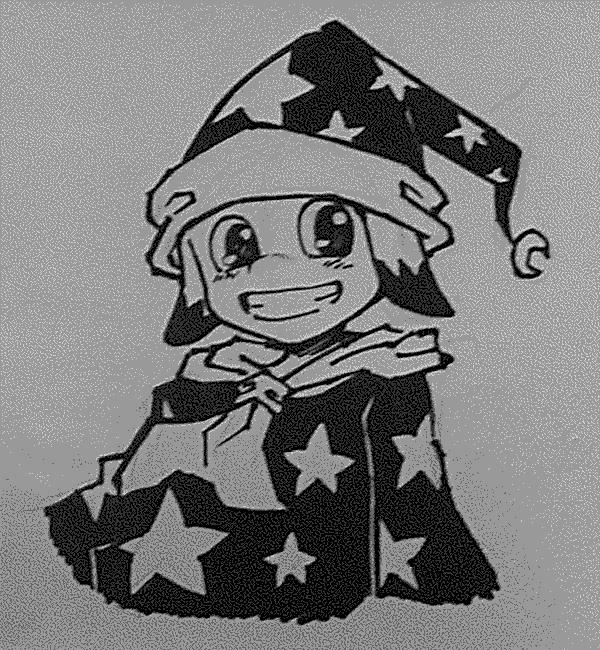 Source: Tokiwagi
Source: Tokiwagi
The reason that Setsuna and Mirai's mothers are buried there is that they both fought there, and after their deaths, the graves were built by the local devils.
Fenrir's intended backstory was that he was one of the commanders in the demon army.
At one point, he was ordered to wipe out the Cerberus village. Though he followed that order, he saved and hid Cool, then left the army, becoming a bounty hunter. Although that backstory was never included in Black Book for lack of narrative space, it was included in the manga, and his depiction there matches up with what Yogiri describes.
Ringo and Tsubomi may have an existing relationship with Fenrir. The ghost Youki, who gave Mirai her Devil Riser, along with the nameless courier in Black Book that gave Setsuna his Devil Riser, are connected to all three.
Though it is not explained in the game, Nagahisa escaped from his perilous situation through angelic intervention.
He was given a Devil Riser-like device, called an Angel Riser, and a Sphinx partner, whose name was never decided upon.
Setsuna and Nagahisa were based on Cain and Abel, with Mirai being based on Cain's sister, Kalmana.
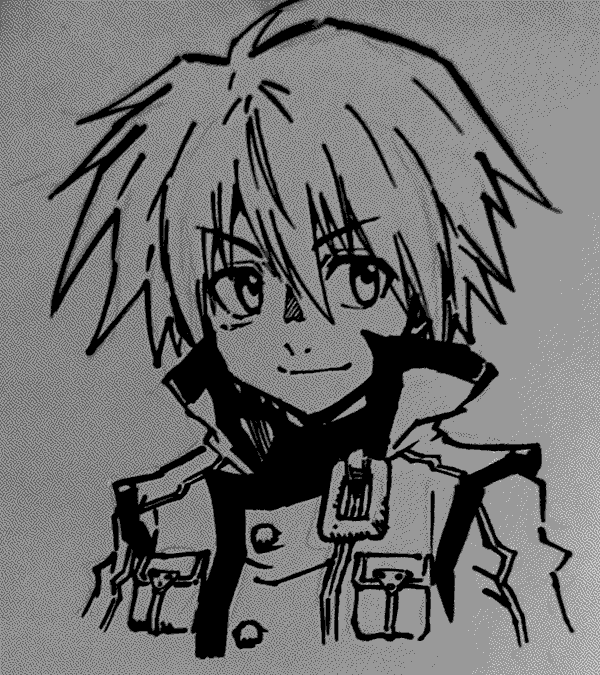 Source: i-honys
Source: i-honys
In the game, Setsuna was intended to be carefree from the beginning. With the manga, the author Fujii was "in full throttle" as soon as he started writing, while the anime focused on slice-of-life. Thus, Devil Children diverged across types of media very, very early on. Yogiri relates the inconsistent Setsunas to switching between different "weapons" or builds in a game to deal with various circumstances. A game needs to accommodate a player's easygoing pace, while the manga has to be engaging from beginning to end.
After the final battle with Nagahisa, Setsuna absorbed Nagahisa into himself and obtained his angelic power. Fundamentally, to progress, Setsuna needs the power of all three races: human, angel, and demon.
One fan suggests that fusion may work differently in Black Book because Setsuna is under the same curse as the Biblical Cain. Yogiri says that this is an interesting interpretation and notes that Red Book is a slightly easier game overall between improved fusion and the ability to fly over ice.
Another fan wondered if Yogiri's backstory was based on Umeo Sanaga's studies on the competing ancient religion Manichaeism, specifically Sanaga's research paper titled "Genealogical Study on So-called《Manichaei》Heresy in Europe". Sanaga posits that in the Manichaeism framing of Cain and Abel, Satanael and Eve gave birth to Cain and Kalmana, while Adam and Eve gave birth to Abel and Seth. This particular reimagining of the Old Testament further reinterprets Satanael as the first son of the Heavenly Father and the supervisor of the Heavenly World, who following a failed rebellion against God, creates a second heaven and the known world of Earth. This all fits very well with the known backstory of Red and Black Book, as well as the earlier concept that Tenkai (Heaven) became Makai (Hell) through the past actions of Devil Children's Lucifer.
Given similarity in names, one possibility offered by a subset of fans is that Ouji Seto was based on Seth, as in the brother of Cain and Abel. His first name (Ouji, meaning "past") shares an etymology that fits with the names of the other Red and Black Book Devil Children, alongside Mirai (future), Setsuna (present), and Nagahisa (eternity), confirmed by Yogiri in one of his remarks.
There's no guarantee Setsuna and Mirai will ever get married, but as they're Cain and Kalmana, it's at least possible that it could happen in one route or another.
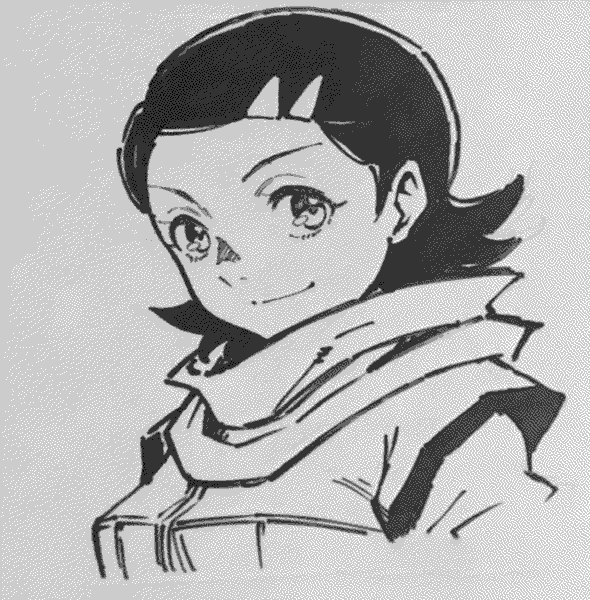 Source: Parmin
Source: Parmin
A fan asks why Setsuna and Mirai can choose to become a god in some branches of the story. The answer is that for one who wishes to fight and make Hoshigami their ally, winning all by oneself without leaving the task to others, achieving godhood is their best option.
In a certain ending of Devil Children (the "godhood route"), everyone loses their memories of demons such as Lucifer, Michael, and Zebul. As a corollary, one fan asks how much of their memory has been lost. The answer is that most people are affected, and their memories are completely rewritten. Nagahisa is also recreated as a normal human, who is no longer sickly and weak and who can live a normal life.
When Setsuna or Mirai becomes the next Hoshigami, they are omnipotent, but not perfect. They do not do everything that they are capable of doing.
In the godhood route, the protagonist's partner makes a new covenant with them. In other words, they'd be together forever rather than ending their partnership. Setsuna's partner Cool would want to use this opportunity to find or create survivors from his village, and maybe a mate.
"Vine" was named after the devil clan of Solomon's 72 Pillars. He is the president of Vinesoft Inc, where he developed the network Vinecon and the summoning gun, Devil Riser.
The Devil Riser is a device that reads the true name registered on the engraved sealing bullet. Vine has the power to know that name. In some respects, he is the "Stephen" of the Devil Children universe, though there was never an opportunity to give him an appearance in the games.
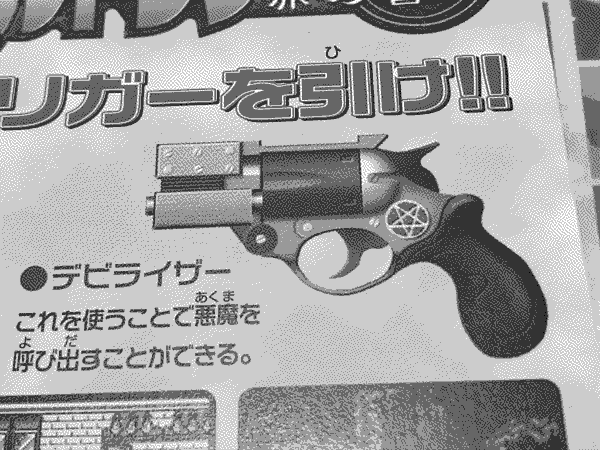 Source: Yogiri
Source: Yogiri
Originally, Devil Risers weren't intended to fire bullets or seals, but there was a lot of confusion as to how they worked and what they were doing. Ultimately, it was decided that it would be best for them to fire the special sealing bullets they're shown to.
Hideaki Fujii had considerable input in Mirai up to the very end, from her hairstyle to how she shouts "Call!" while devil summoning.
Elegy is the shortest character, while Mirai (with her boots) is the tallest.
In the instruction manual, Setsuna and Mirai are indicated to be in the fifth grade. Nagahisa Kai is one grade below Setsuna and Mirai. Elegy doesn't go to school, but if she did she would be one grade further down. Ouji, who never showed up in Red and Black, would be in the fourth grade. This is a fair bit different from the manga, where all of the Devil Children are revealed to be in the same class.
Cerberus and Gryphon were chosen because of their mythological roles as gatekeepers and protectors. Nagahisa's Sphinx is another example.
Cool's brother, based on Orthrus, is named Root. Veil's sibling is based on Hippogriff, but their name is not recorded.
Lucifer's design was intended to be a handsome guy (lit. ikemen), like Michael, but he and his twin brother Michael don't look very alike at all.
Yogiri says that he tried to put some thought into the demons he chose for Battle Net; for example, the beetle-like demon Elegy uses (Paramecium) is one of her favourites. He would have liked to spend more time giving those demons active roles, if he had the chance.
Yogiri is asked to talk about how mangaka Hideaki Fujii became involved in the Devil Children project, but states that it is simply a secret. Yogiri remarks that he really likes Fujii's Elegy and Fenrir, however.
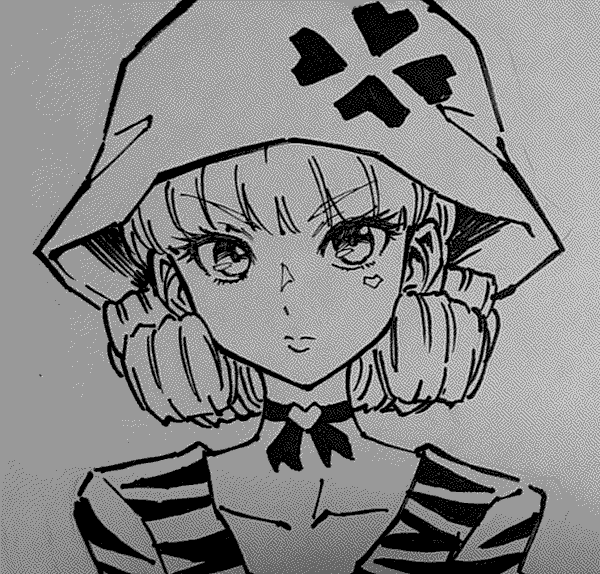 Source: Mitsuo
Source: Mitsuo
Yogiri ends the Q&A by saying that he was having a lot of difficulties and living hand-to-mouth when Devil Children came out. He's grateful to everyone who bought and enjoyed his work.
There are a few items that Yogiri left open ended, out of respect for the other entities involved and to leave some bits up for fan speculation.
漫画アニメ共に企画初期の段階から声をかけて動いており、漫画はボンボンから当時新人の藤異先生、アニメ側からメガテン好きな岩永さんが名乗りを上げ参戦。しかし途中で私がいたG社が潰れたことで、TVアニメは私の与り知らぬ所へ……
Source: Yogiri
Yogiri's employer and Atlus' contractor to handle Red and Black Book is referred to as "the G-company I was in", which went bankrupt over the course of the project. It appears that they were also expected to handle the anime adaptation before the project fell to TMS.
Raindare speculates that this could be Gainax, as they were running into dire straits in 1999. Then-Gainax president Takeshi Sawamura took the fall for his studio when on July 13, 1999, he and tax accountant Yoshikatsu Iwasaki were arrested for fraud on the scale of billions of yen. That deception allowed the studio to avoid paying 580 million yen in taxes until it was caught.
The first preview of Red and Black book in the January 2000 issue of Famitsu 64+ states that the games were 33% complete by the end of 1999, indicating that the planning and pre-production timeline overlapped with these events.
This connection is not at all certain given that Gainax continued to last for another decade and a half, through significant outsourcing in the production of FLCL and Evangelion licensing.
However, Gainax did have a less well known history as a video game consultancy through the 90s, with the Princess Maker series being their biggest success. Their last fully original game that wasn't an Evangelion spinoff, a Princess Maker sequel or a strip card battling game with the rules and appearance of 1990's Battle Skin Panic was a low profile, tongue in cheek porn game featuring Gainax employees called Gainax Renzoku Satsujin Jiken. This was quietly released on June 14, 2000, and never mentioned on the English version of Gainax's software website even though that website prominently features Evangelion strip mahjong.
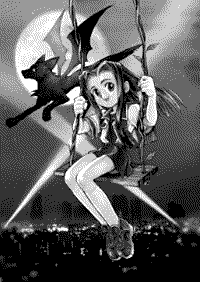 Source: Ninelives Co, Ltd
Source: Ninelives Co, Ltd
Speaking of Princess Maker, there was a fourth Princess Maker game that was in planning around the same time as Red and Black Book's development.
It was to be the first set in modern Japan, with the player character as a refugee of a fantasy kingdom living a normal life. They are tasked with raising a girl named Karen who herself ran for her life from another world to live in Tokyo, under the guidance of the winged dog demon Cube. At face value, there are certainly similarities to Devil Children's Harajuku setting.
A series of teaser images and doujin-style previews of upcoming art were released to show off the new princess in 1999 and 2000, as found in 2017's retrospective art book "Princess Maker: Takami Akai Artworks". The August 1999 preview doujin even describes in-game events where fantasy creatures from other worlds pose as human to befriend or act as rivals to Karen, similar to how Souta, Youki and Takajou interacted with the Devil Children main characters in the games.
By the time previews were published in Korean magazines with an expected release date of Spring 2001 ( scans: 1 2 3 4 ), it was credited as being developed by series creator Takami Akai's own company Ninelives Co, Ltd instead of Gainax.
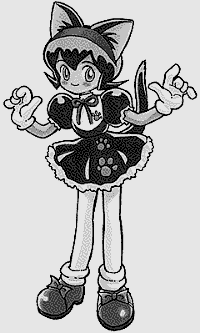 Source: Ninelives Co, Ltd
Source: Ninelives Co, Ltd
This was the case for every Princess Maker from the first original PlayStation Princess Maker game until then. Ninelives' alleged purpose was for longtime Gainax employees Takami Akai and Jun Tamaya to handle planning games.
Back in 1998, Ninelives had plans to expand. The company was looking to bring on board new graduate hires in roles such as graphic designers and production managers or planners. That may have been for the Crest of the Stars PlayStation game released on May 25, 2000, which reportedly started planning in 1997 and shipped later than expected, though the recruitment page lacks details on the anticipated projects. Yogiri's background and date of birth indicates that he'd have to have graduated from a four year university no sooner than March of 1998, and given the earliest game credits to his name combined with his pseudonym amount to Devil Children, he'd have to have been recruited for that project between 1998 and 1999.
While most of Ninelives' recruitment stopped in 1999, there was a specific call for a "mid career" graphic designer active around May 4th, the very same day that the first Princess Maker 4 doujin was finished. The request specifically indicates that Ninelives was seeking a graphic designer with experience with character design and digital art.
This is seemingly unaccounted for, as the only character designer credited for PlayStation Crest of the Stars was Risa Kaneda ("金田 理沙"), an existing member of Ninelives whose past experience was working as graphic design staff for their 1997 game Cellophanes. Meanwhile, Naoto Tenhiro, who would be credited for the character design of a later Princess Maker game, had just started working on Sister Princess for idol entertainment company Bushiroad, and certainly did not have the time to moonlight for Ninelives in 1999. This particular job description could fit Waka Maeda's standing in the industry, though she does not appear in the credits for any Ninelives games. Regardless, once the senior graphic designer role was filled, the number of staff employed ceased to be reported on the company website later that year.
Curiously, the publishing credits for Princess Maker 4 in magazine previews and the official website went to CyberFront instead of Ninelives or Gainax.
Ninelives' product page for Princess Maker 4 didn't give Gainax a production credit until January 2003. That same year, Gainax president Hiroyuki Yamaga was cited for praising his company's success with the Princess Maker franchise and reducing Gainax's involvement in game design.
"We're still making games, but compared to [when we made Silent Mobius and Princess Maker], we're taking it a little easier," Yamaga says. "What we decided instead was to take the animation we have the rights to and put them out ourselves; if the people making it are close by, then you're able to make something that's much closer to your heart, so to speak."
"We did make several games for the PlayStation," but he exclaims that it was almost prohibitively costly. Considering the economic downturn in the Japanese game industry, Yamaga opines that unless you're a large company, you can't create a decent game on platforms like the PlayStation 2 anymore. "That's why we're thinking of a somewhat smallish market. Making anime is our number one priority, but we are still considering putting out games as a kind of service to our customers.
Source: July 2003 issue of Newtype USAThis specific iteration of Princess Maker was ultimately cancelled in favour of a completely different Princess Maker 4 credited to "GeneX" that was released on September 1, 2005. GeneX was the character game brand of CyberFront, often tasked with handling visual novels and Princess Maker ports starting in 2000. The concept and much of the setting of the original Princess Maker 4 weren't revisited until 2007's Princess Maker 5, credited to Gainax and its subsidiaries. Princess Maker 5 was chiefly directed, planned and written by Ayano Chitose, a new Gainax employee originally hired as a graphic designer following a concert at Komagane Cultural Hall in June 5, 2002 to work on art for GeneX's "refine" ports of Princess Maker 1 and 2 after leaving Konami.
These events do suggest that Gainax didn't have much of a video game planning business left by the time of May 18, 2001's Princess Maker clone "Neon Genesis Evangelion: Ayanami Raising Project". That was directed by Jun Tamaya, shipping after he left Ninelives in 1999 to join the Eva digital content group at Gainax. By then, Gainax was leaning heavily on licensed, externally developed game engine assets such as a mahjong engine presumed from TamTam. Takami Akai followed in 2001, returning to Gainax as a director of the board.
A possibility exists that Princess Maker 4 became Ayanami Raising Project judging from the shared concept, staff, the timeframe in which when it was released, and Ninelives' gradual movement away from game planning before the brand itself became merely synonymous with Takami Akai.
Going by changing copyrights originally referencing Ninelives to Gainax and GeneX sometime after April 2002, it seems much of Gainax's game planning business was offloaded to the new company, GeneX. Upon GeneX and CyberFront's collapse in 2013 blamed on "inadequacies in [...] intellectual property rights", both companies were later absorbed into a Korean spinoff known as CFK Co, Ltd, the current publisher of Princess Maker games.
It's fair to observe that the entire saga of GeneX with Princess Maker and Gainax had to have happened after Yogiri's company had to cease further work on Devil Children. The original Red and Black Book games were released on November 17, 2000, following the DeviChil anime that started airing on October 7, 2000 and the Devil Children manga that began before that in the August 2000 issue of Comic BomBom released on July 15. It follows that any fateful moments leading to bankruptcy or an office closure must be in 1999 and 2000. That timeline could still fit Ninelives, whose very last game, Dennou Gakuen Millennium 2, shipped on August 21, 2000.
Has Gainax been known to work with Atlus or Multimedia Intelligence Transfer in the past? Going through game credits, there's not a direct reference, though there is a planning company with animation and recent Gainax experience referenced in Multimedia Intelligence Transfer's last work before Devil Children Red and Black Book on the Game Boy Color.
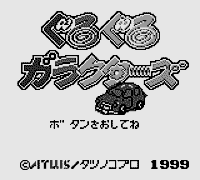 Source: Every Gamer Life
Source: Every Gamer Life
On September 10, 1999, Multimedia Intelligence Transfer and Atlus released a Game Boy Color collectable monster game called GuruGuru Galactors, featuring Atlus co-credited on the title screen with "Tatsunoko Production". The marketing copy on Atlus's website really plays up the anime production collaboration as "a gag fantasy RPG with laughter and tears brought to you by anime world giants Hiroshi Sasagawa and Tatsunoko Production with Atlus, creator of RPG blockbusters".
Comic BomBom even had a manga tie in that ran from June 1999 to February 2000 penned by a young mangaka discovered through BomBom's own Newcomer Award competition, very similar to how Hideaki Fujii was sourced for Devil Children.
Not only does the game itself bear visual similarities with Multimedia Intelligence Transfer's Last Bible and early Devil Children games, the ending credits give Tatsunoko Production a character design credit referencing Tatsunoko Production's planning office. No similar credit exists in Devil Children Red and Black Book for character designer Waka Maeda or planner Yogiri, who were instead credited as individuals under their real names despite working through a planning company.
In an essay where he cut all remaining ties with Gainax, Hideaki Anno declared that most of Evangelion's production actually took place at Tatsunoko Production, with only three Gainax employees regularly working on the anime. This is the closest we ever get to a Gainax and Atlus association around 1999.
All told, there's only circumstantial evidence linking the uncredited Devil Children planning company with Gainax. It's clear that the traditional Gainax game planning business largely represented by Ninelives was decommissioned and merged into Gainax proper in favour of a simpler Evangelion and Princess Maker licensing business supported by an outside software firm. But aside from the timing and Ninelives' shared interest in modern Japan, fantasy, angels, demons and royalty, the smoking gun is yet to be found.
While Nagisa Akechi (Waka Maeda) and Yogiri (------- Honda) don't appear in any of Gainax or Ninelives' works, their presence in the game industry is lacking as well. Waka Maeda's only video game credit as "Nagisa Akechi" lies in a small role for ASCII's End Sector, a PlayStation game that boasts the works of dozens of artists sourced through the ASCII publishing organization, including Famitsu, where Maeda worked at the time. Yogiri's next game after Devil Children credits him through his pseudonym, Samurai Evolution: Oukoku Geist, with development handled by TamTam and planning handled by the newly established TeaSet. Neither work posits any further hints as to where they came from, leaving us with no further leads as to what other planning company they could have worked for.
 Source: GAMESTUDIO, Inc
Source: GAMESTUDIO, Inc
Before we move on, there is one "G-company" that silently credited themselves for work on the Devil Children project, even though it never showed up in a printed source at the time. Specifically, GAMESTUDIO, Inc for the game design of the Devil Children Trading Card Game, a then-ten person firm focused on a small number of games.
GAMESTUDIO, Inc has a Namco connection in designer Masanobu Endou, the head of the company until the mid 2000s. As recently as 2013, he personally claims credit for the game design of the Devil Children Trading Card Game. Further, he claims to have done illustration work for the trading card game on his personal site, which appears to have been for the gem cards (1 2).
The studio itself is praised by none other than Wizardry co-creator Robert Woodhead as being the developer that localized Wizardry in Japanese for ASCII. A fact that is well corroborated in multiple places within their work history page such as the Famicom games listing. The ASCII association ties in well with Waka Maeda's work history with Famitsu while they were owned by ASCII Corporation.
Still, GAMESTUDIO, Inc's Game Boy and Game Boy Color page and their circa 2002 work history page come up slightly short. While they are credited for the game design of the first Wizardry Gaiden in 1992 and supervising remakes of the first three Wizardry games in the beginning of 2001, there are no releases listed for 2000. The most recent Game Boy Color game found in their work history is a production credit for Media Factory's DT Lords of Genomes, initially conceived of as an up to four player Nintendo 64DD card battling game with special Game Boy Link capabilities.
The company was active through the early 2000s rapidly building J2ME and flip phone games including a remixed port of DT Lords of Genomes. Today, their mobile division remains as a supporting developer of titles such as Cardfight Vanguard Zero and all four instalments of Square-Enix's Lord of Vermilion.
With regards to GAMESTUDIO, Inc, the bankruptcy claim is unsubstantiated through what we know so far. The company didn't restructure to focus exclusively on mobile titles until 2004, and they had been releasing titles for phones in the years just prior to that (2003, 2002, 2001). Masanobu Endou was still promoting DT Lords of Genomes on behalf of GAMESTUDIO in a roundtable interview in the July 2001 issue of Famitsu, some time after Devil Children Red and Black and within the same month of Atlus' White Book.
It follows that GAMESTUDIO didn't lose Atlus as a customer until the D-Children Trading Card Game and Comic BomBom tie in manga were officially cancelled in the beginning of 2004. That is long after Yogiri had to leave the Devil Children project in 2000, and just over a year since the last wave of trading card game expansion packs, making it unlikely that this is the "G-company" he had worked for.
昔出したデビチル同人誌、持ってるっぽい人のツイート見かけて懐かしんだり。そっとホームページもやってました。
Source: Yogiri
One of the elements that encouraged Yogiri to open up with his involvement in the Devil Children project was a series of tweets around his Devil Children doujinshi.
The whereabouts and title of this doujin work are unclear, though the Wayback Machine does have an archive of his personal website from not long after.
There are a few listings for his Pretty Cure doujin which came out a few years later. None of his works prior to that seem to be visible online.
Perhaps that Devil Children doujin will turn up again one day.
Yogiri gives high praise for three individuals whom he worked with; Waka Maeda, Hideaki Fujii, and Yoshinori Iwanaga.
Iwanaga is one of the lesser known figures in the Devil Children project. He is co-credited with Maeda for devil design in the Game Boy Color games. Maeda herself appeared to vanish from the public entirely, as she said goodbye on her website sometime between April and the beginning of June 2002. That year and from then on, Iwanaga replaced Maeda as character designer for the Game Boy Advance Devil Children "reboot" games.
あー。今更気づいたけど、もしや岩永さんTVアニメ参加してないのかもなぁ。どうなんだろう……
Source: Yogiri
Yogiri shows a moment of confusion. Iwanaga apparently didn't work on any form of the Devil Children anime. Not even the Red and Black Book PlayStation opening video, which came from a TGS promo reel that was overseen by Yogiri himself. Yogiri expresses surprise given that Iwanaga was the most enthusiastic Megaten fan of the creative team and seemingly had the perfect background for working on animation.
Following Devil Children, Iwanaga was the enemy designer on Persona 3, replacing Kazuma Kaneko's traditional role on the new demon design front. Reportedly, Kaneko was not informed of the Persona 3 project, on concerns from the remaining Persona 2 team at Atlus that Kaneko did not want to do another one. Back then, Kaneko could single handedly cancel the Persona 3 project as every game Atlus made had to get his approval. All of Kaneko's "persona" designs in Persona 3 were based on his existing work on Nocturne and Digital Devil Saga: Avatar Tuner, leaning heavily on the 3D models and designs already made for those PlayStation 2 games rather than building a new set based on the entirely different PlayStation Persona 2 designs.
After Persona 3, Iwanaga straddles between doing enemy design work for the Persona games and Sting before leaving the video game industry entirely to continue a long career in animation.
Iwanaga's only animation credit associated with Atlus is for a little known visual novel inspired strategy RPG called Eithéa in February 2001, noteworthy for being released months after Red and Black Book. This was a curiosity developed by contractor TamTam and produced by Atlus, featuring then-well known mangaka Aoi Nanase attached to the character designs. It was part of Atlus' initial attempt to pursue visual novel inspired strategy RPGs as Flight-Plan was finding success in the genre with Black/Matrix and Summon Night. Eithéa shipped less than a year before Atlus acquired Career Soft, the studio behind Langrisser and Growlanser. Effectively that staked all of Atlus' future prospects in that genre on Growlanser and eventually the Black/Matrix inspired Devil Survivor.
That particular connection seems incidental, as Iwanaga never did additional work with TamTam. Likely, Iwanaga had to backfill labor to help another Atlus project ship on time.
Perhaps Iwanaga's lack of animation work during his time with Atlus, much less Devil Children itself, came from a lack of perceived need by Atlus to pursue animation beyond what's necessary. For the PlayStation and PS2 years, that amounted to intro videos, a sparse number of cutscenes, and competent yet tonally inconsistent anime promoting their own games.
It took some time, well after "DeviChil" and the cancellation of "D-Children", before Atlus appeared to take anime adaptations more seriously. In particular, the poorly received Persona: Trinity Soul filled the airwaves before Persona 4: The Animation changed that status quo in 2011.
As for today, Iwanaga doesn't do much online in public. He does have a website where he keeps images of his assembled model kits on Tinami. Of note, he has three galleries based around a Busou Shinki version of his Iron Kitsune (テツギツネ) design from Shin Megami Tensei Devil Children: White Book. One has some choice words about his treatment in the game industry.
デビチルは私の持ち込み企画です。赤と黒、GBC版の一作目だけの契約で、以降は関わっていません。途中で私とキャラデザの人がいた会社が……潰れたりと……大変なことが色々ありました。
Source: Yogiri
Waka Maeda, the character designer, worked alongside Yogiri at the planning company. There was considerable distance placed between them and Atlus.
ファミ通の攻略本見たら重要な敵キャラはイラストも黒塗りで伏せられてて残念。高城くんの人間形態の時のウサギの尻尾ついてる怪獣デザインの私服いいですよね。バール三兄弟とか四大天使とかの前田さんの未公開設定画も色々あるけど、当時はFAXでデザイン画送ってたしA社にも残ってないのかもなぁ。
Source: Yogiri
All of her designs were shared with Atlus by fax, which Yogiri doubts took measures to preserve in the time since then.
明智先生(前田さん)は当時個人サイトで成長した高校生の刹那とかそっと趣味で描いててまぁ勿論めっちゃカッコ良かったんですが、もうあの頃からその辺り追ってたファンはあんまりいないかな。画像全然流出してないんだなぁ。
Source: Yogiri
Maeda once had a website as "(Nagisa) Akechi" where she posted unofficial high school versions of the characters as a hobby. Its whereabouts are not shared, and it's clear that any such content from the website was not preserved.
Trying to recall this work, one fan known as Naruchiru illustrated what they remembered of Maeda's high school-aged thought form Berith. As a follow up, they did another of Berith accompanied by an extremely young Phegor, and a quick line sketch of the three Baal brothers enjoying fast food.
In the same spirit, Menso contributed a sketch of high school Setsuna with a juice box and open jacket.
てかキャラデザの前田さん今どうしてるのかなぁ。岩永さんはカミズモードやってるようで。召喚時のコール!という掛け声や未来のデコ出しは藤異先生のアイディアです。
Source: Yogiri
It appears Yogiri and Maeda lost touch with each other fairly soon after the planning company's involvement collapsed. Where did Maeda go, then?
Maeda continued to be credited for character and devil design in 2001's Devil Children White Book, a rushed sequel released only seven months after Red and Black Book with a significantly different setting than the White Book Yogiri had devised. Her last known set of "official" art lies with the chapter illustrations printed in the pages of Famitsu's Devil Children Black and Red Book PlayStation Official Guidebook.
At present, Maeda's extended body of work circulates most prominently in Japanese second hand book stores. Besides her 4koma on various children's video games like Mega Man and Kirby across a range of magazines, her comics sometimes show up in "Rapport Comics" anthologies.
These anthologies are reprinted volumes of comics originally made for Rapport's Fanroad magazine. Fanroad is a defunct publication that specialized in printing fan made content, including artwork, comics, and recipes dedicated to various popular anime like Gundam Wing and DeviChil.
Of particular interest is "真・女神転生デビチルアニメコミックアンソロジ", the Shin Megami Tensei DeviChil Anime Comic Anthology. The cover art and first three stories are unmistakably in Maeda's style, crediting Maeda by her real name rather than her most common pseudonym "Nagisa Akechi".
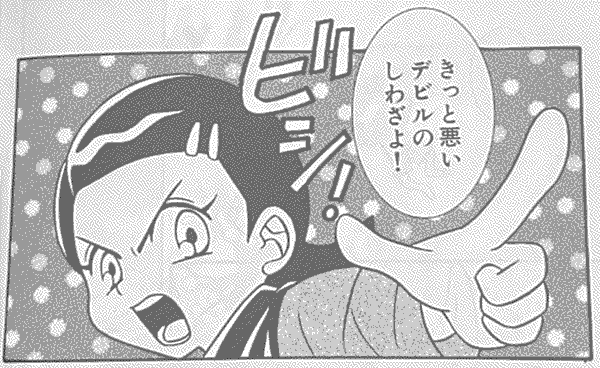 Source: Shin Megami Tensei DeviChil Anime Comic Anthology
Source: Shin Megami Tensei DeviChil Anime Comic Anthology
At the end is an omake page greeting fans that advertises her personal page and fan site by the URL "http://www.e-net.or.jp/user/robot/index.htm".
While the link is long since dead, a cursory glance at the Wayback Machine shows it to have once belonged to the personal page of "NAGISA" with some Mega Man, Phantasy Star Online and Takajou art, bearing the name of "Devil's Food Cake".
Not much of the site has been archived, which is perhaps for the best as Maeda expressed in June of 2002 a wish to move on from her past works.
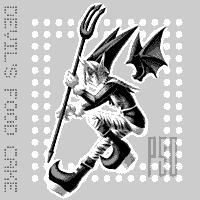 Source: Waka Maeda
Source: Waka Maeda
Its final iteration at the end of 2002 indicated that she was starting to play Phantasy Star Online Episode 1&2 for the GameCube with a group of four that included Maeda's good friend, Pokemon monster designer Atsuko Nishida.
At that point, Interipelli doesn't think that there's any good reason to look for Maeda's whereabouts. Maeda has moved on from the video game industry, like most of the creative team that was once involved in Devil Children. Presumably she's still having the time of her life playing online games with one of Pokemon's most beloved and reclusive figures under another pseudonym.
The only recent works credited to "Nagisa Akechi" are a few short stories on the shared writing site Syosetu.com published in the beginning of 2021. These are centred around a high school boy, written in the first person, and have a bit of a reincarnation in a fantasy world flavour. Hints do exist in the previews that there was a plan to have the protagonist break and rewrite the rules of the world; whether these will see more updates after COVID remains unknown.
That leaves Hideaki Fujii as the only original creative team member who still wants to do more with Devil Children Red and Black Book in the present day. But that topic goes far beyond Yogiri's anecdotes and observations...
記憶が曖昧なんだけど、そう言えば3月14日はデビチル刹那の誕生日だった気がする。2000年7月に11歳の小6で……今何歳なんだ? 30歳!? そうかもうそんなに大きくなったのか……
Source: Yogiri
About a year before this event, Yogiri claimed that Setsuna's birthday was in March 14th, assuming that Setsuna was in the sixth grade.
待って。取説読み返したら刹那も未来も11歳の小5て書いてある。えーと……舞台が7月で、未来の誕生日も7月で、刹那が3月だから…… 誕生日設定は特に公開する気のないものだったのであんま気にしてなくてその辺り整合性取れてなかった……
Source: Yogiri
Going over his past tweets, Yogiri posted a correction. The Red and Black Book instruction book indicates that Setsuna and Mirai are in the fifth grade, and Mirai's birthday is in July. Mirai and Setsuna are said to be 11 years old, while the game starts on July 31st, in the year 2000.
Since Japanese school terms start from April 2nd and run until April 1st, that means Setsuna has either been held back a grade, or his birthday can't possibly be correct. Yogiri decides that the birthday he had in mind couldn't work with the continuity the games settled on.
私は誕生日とか記念日に思い入れが無くて、過去のツイートが結構反響あって驚きました。
Source: Yogiri
The birthdays were enthusiastically shared by the small Devil Children fandom, apparently serving as the lightning rod by which several fans found Yogiri's call for questions. He finds this a little surprising, as he doesn't think birthdays are that significant on their own.
Mirai's birthday is considered by fan artists such as Miyu and unknown96305 to be on July 27th. This is the date given by Mirai at the end of chapter 15 of the manga, July 27th, 1989, which fits well enough with Yogiri's observations.
Nagahisa's birthday is left far more open ended, with an amusing parable...
永久の誕生日は……誕生周辺の出来事が複雑で、矛盾が出るとアレなので誕生月の設定はあるものの明かさない方向で。
とは言えそれだけじゃなんなのでヒントを。
鶏の卵は羽化するまで20日ほどだそうで。私は天使や堕天使って卵生だと思ってて。物質的な卵じゃなく霊的な感じで。刹那も永久もハーフな訳ですが。卵で生まれたかどうかは置いといて、産まれるまで10か月はかからずもっと全然早いハズ。
Source: Yogiri
How Nagahisa came to be born is "complicated". Yogiri does not want to reveal the month of his birth, but he gives a hint through an amusing set of anecdotes.
Yogiri relates that a chicken's egg takes twenty days to hatch. In his mind, angels (such as Michael) and fallen angels (Lucifer and Azel) are oviparous, though not with a literal, physical egg. The idea is that they would reproduce through a "spiritual" egg. Forming offspring somewhat akin to what we call in the western world a "test-tube baby".
Now Setsuna and Nagahisa are both half-human. That twenty days estimate is likely too soon for a half-breed. Nonetheless, Yogiri asserts it should take much less time for them to be born. Certainly less than ten months.
Taking all of this into consideration, it it possible that Setsuna's birthday is "canonically" sometime between April and July, and Nagahisa in Winter. If we assume instead that Setsuna is born in Yogiri's original timeline of March 14th, then Nagahisa is probably closer to December, somewhat aligned with major holidays and Judaeo-Christian origins.
As for why 3/14 is a significant date, we could look towards the Bible, though there are far too many passages that can be cited through the index of "3:14". There is a particularly touching one in "John 3:14":
We know that we have passed from death unto life, because we love the brethren. He that loveth not his brother abideth in death.
Source: John 3:14, King James Version of the Holy Bible
Which seems appropriate for how Setsuna and Nagahisa's story wraps up in Black Book.